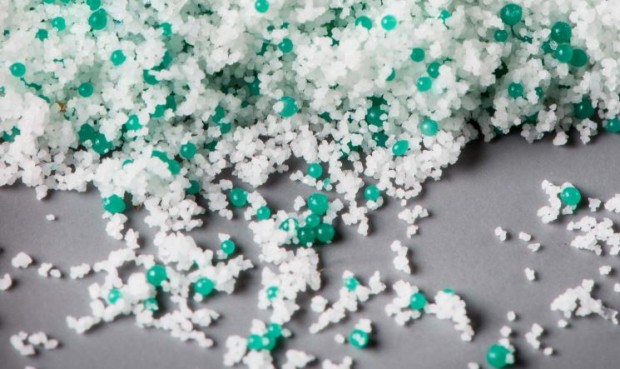(PS - it’s all of them!)
After discovering that 170 types of seafood contained traces of microplastics, Greenpeace East Asia decided to put 30 of the world’s biggest cosmetic and personal care brands to the test.
Microbeads might be best known to you as the coloured beads in your shower gel and facial scrubs, but more recently they’ve gained notoriety for wreaking havoc on our ecosystems and marine life.
The tiny pieces of plastic are added to everyday cosmetic products as an exfoliating agent, or for colour and texture. They’re tiny enough to travel down your plughole and right through water filtration systems and into our rivers, lakes and oceans.
A single tube of face wash can contain up to 360,000 of these tiny plastic spheres. That means that once we have finished washing our faces or brushing our teeth, we unwittingly release thousands of pieces of plastic into our environment, where they go on to ‘gently exfoliate’ the digestive tracts of seabirds and even enter the food chain.
They can also act as agents to absorb and release toxic chemicals around the sea and into the marine life that ingests them.
How do the companies stack up?
Unfortunately, while most of the brands claim to have their plastic pollution problem under control, not one of them succeeded in meeting Greenpeace’s environmental standards, meaning that they still have the potential to allow this contamination into our waterways.
Many brands have made promises to do the right thing and ban the beads, but each brand has its own, narrow or confusing definition of what constitutes a microbead. These definitions can vary from function of the product, role of the microbead and even the shape of the microbead, creating loopholes that could allow the inclusion of microbeads that don’t fit into these limited definitions.
What’s the solution?
So how to get these pesky microbeads out of our products and out of our oceans? The solution is simple. Our governments need to step in and enforce a total ban on the sale and production of all solid microplastic ingredients in all personal care products.
The good news is, it’s already happening. The US announced a ban on microbeads in December last year. In the UK, more than 300,000 people signed a petition calling for their government to follow suit, and just last month the minister responsible said that the government now supports a ban (although, they haven’t moved forward with it yet…).
In the meantime, you can vote with your wallet and choose brands that don’t add to this pointless pollution. Check out Flora and Fauna International’s Good Scrub Guide or download the Beat the Microbead app and send a clear message to manufacturers that microbeads are unwanted and unnecessary.
----------------------------------------------
Greenpeace East Asia consulted Fauna & Flora International on expected good practice with respect to corporate commitments to ending microplastic ingredient use.
Author: Taehyun Park is an Oceans Campaigner at Greenpeace East Asia.


